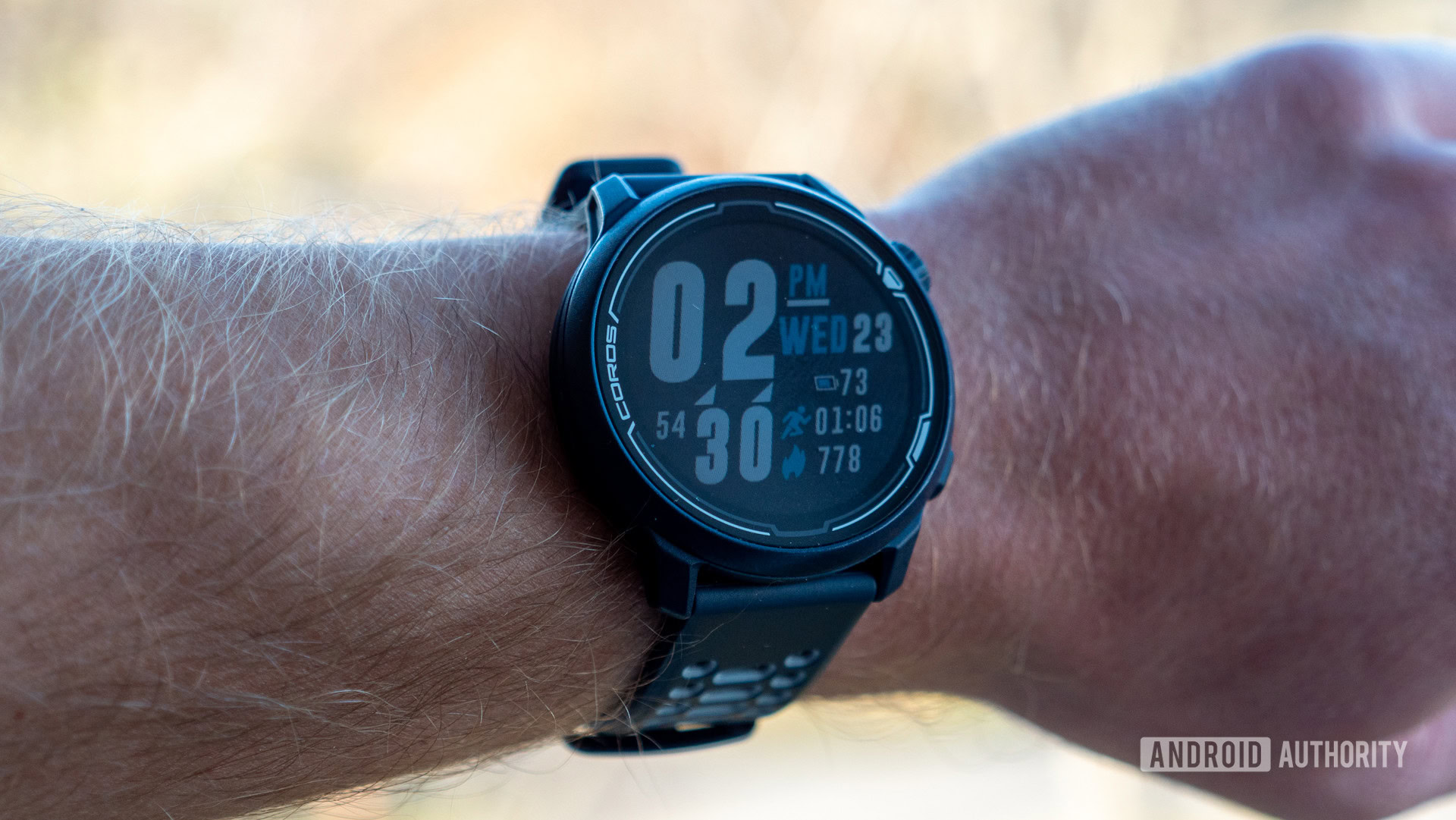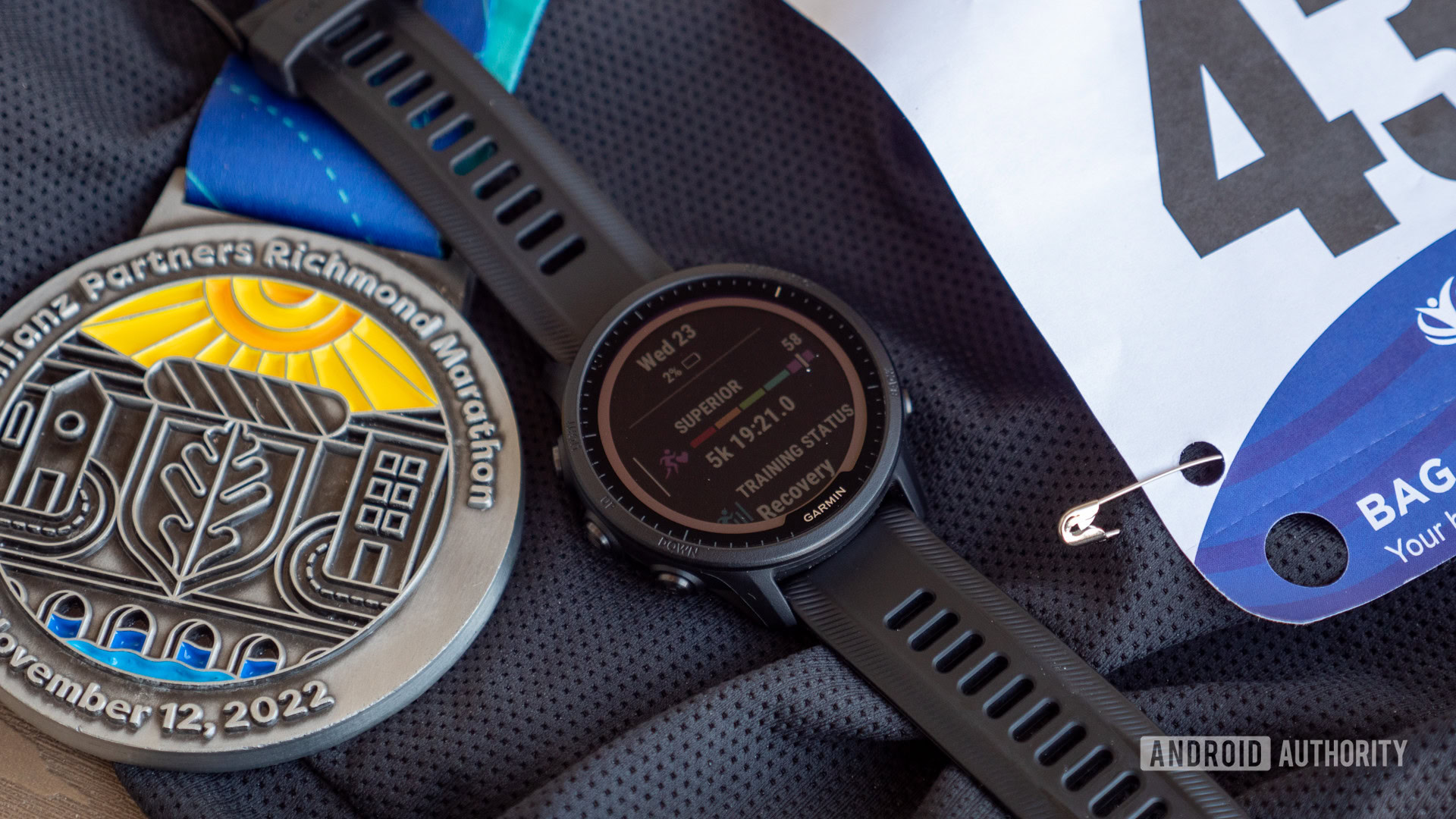Can your GPS watch train you for a marathon?
Ryan Haines / Android Authority
How do you know you’re talking to a marathon runner? Don’t worry, they’ll tell you. Only kidding, well, kind of kidding. Plenty of marathon runners are happy to talk about their race any chance they get, especially during the first few days of nursing sore legs. However, the weeks and months of training don’t always get the same amount of love, even though they’re just as important as the race itself.
Let’s talk about those weeks — the early morning miles, the Sunday long runs, and the afternoons spent on the couch recovering. I set out for my first marathon this fall, but I had no idea where to start, so I let my running watch be my guide. Here’s how Coros (and later Garmin) got me through 26.2 miles and where the training plans came up short.
Of course, I’m applying these lessons to the marathon, but they mostly hold true for shorter distances, too. If you have your eyes on a 5K, 10K, or even a half marathon, it’s good to know what you — and your watch — are getting into.
A man, a plan, a watch

Ryan Haines / Android Authority
Starting your marathon training block can be challenging. Not because the first few weeks are overwhelming but rather because there are so many ways to approach it. You can take the Molly Seidel approach — high mileage, slower pace — or go for modest mileage with more speedwork. Some people even take a low mileage approach, barely cracking a 20-mile long run until just a few weeks before the race. As a first-timer, I wasn’t sure which way to go.
My deciding factor, as it turned out, was the watch on my wrist. I’d already spent most of the summer with the light, simple Coros Pace 2 as my daily companion, and used some of Coros’ other plans for shorter distances. It seemed like a simple decision to go with what I already knew — after all, you never want to add anything new on race day.
I already have a permanent Coros tan line, why not add a training plan to justify it?
Another benefit of trusting Coros is that there’s more than one marathon plan to dig into. There’s a standard 12-week build, as well as an 8-week sub-3:30 plan that’s co-engineered with Stryd. I opted for the standard plan, figuring it was best not to set my expectations too high for marathon number one. The standard Coros marathon plan sets you up to run between four and five times per week, and I decided that I’d follow the plan to the letter — not shaving a repeat or trimming a kilometer (yes, Coros measures in kilometers for most of its plans) along the way.
Of course, just about every other major wearables company offers its own training plan. Garmin, Polar, and Nike Run Club each have options of varying lengths — some up to 18 weeks of training. However, there were aspects to each that further encouraged me to stick with Coros. In Polar’s case, it was the fact that all runs are time-based rather than distance-based. I’m used to training at a certain number of miles per week and wasn’t sure how well I’d adapt to a different approach.
For Garmin, the training plans didn’t quite meet my pace goals. It marks a 20-minute 5K and a 1:32 half marathon as its fastest goal times, both of which I’ve already surpassed. I’ve also switched between Garmin and Coros before, and it’s not always a smooth jump. If you go from running 40 miles per week on Coros and none on Garmin to the opposite, Garmin will warn you about overexerting yourself and recommend longer rest periods and lighter workouts until it adapts to your fitness.
Then, there’s the option of using a smartwatch. I’ve already written about how I much prefer a GPS watch for its better battery life and operating system flexibility, and both points still hold true. Training for a fall marathon means training through Samsung’s foldable launches, the latest iPhone release, and Google’s annual Pixel event. Locking myself into a Galaxy Watch or an Apple Watch would make my reviewer’s life complicated while hopping from Android to iOS and back again, but Coros and Garmin have no such problem.
Learn more: The best fitness apps for Android
Anything but an easy run

Ryan Haines / Android Authority
It’s funny how life imitates art sometimes. Both my training and marathon started smoothly, giving me the impression that I’d cruise to the finish line. Everything went swimmingly for the first few weeks, shifting between tempo runs, recovery runs, and the beloved Sunday long run. I settled into the routine quickly, blocking time each morning to get my miles in while thinking through my Android Authority to-do list. Before long, I had go-to running routes, knowing exactly where to go for 10 miles, 12 miles, and locking down a reliable long run.
The Pace 2’s controls were already burned into my mind after using it all summer, which meant I could buckle down and focus on the miles. I adjusted to life measured in kilometers and pacing in running power (measured in watts) rather than time or my heart rate. The mentality carried over to race day when I started at a good clip and breezed through the first half of the race right on my goal pace.
Then, the wheels came off. Coros rolled out an update that essentially split my watch from my training plan, even though the two had been syncing for weeks. I could see my plan in the Coros app, but I could no longer jump into a workout on my watch. I tried everything — pairing it with a new phone, syncing the plan all over again, and even resetting the watch itself. After reaching out to the Coros support team, I was told that a fix was still at least a few weeks away.
My race took a similar turn. I hit mile 20, and both calves locked up, forcing me in a harsh new direction for the last six miles.
It’s all fun and games until your watch gives up on your training plan halfway through a marathon cycle.
At this point, it was far too late to jump into a brand-new training plan, so I had to improvise. That’s what a marathon is, though, learning to overcome obstacles. I decided it was time for the Pace 2 to come off my wrist, and the larger, longer-lasting Garmin Forerunner 955 Solar took its place. I had to manually create each workout, including the warmup, cooldown, and each repeat, but I wasn’t about to let a technical difficulty end my cycle.
Unfortunately, there’s no option to swap out my legs on race day. I didn’t have much hope to keep running outside of stretching and taking it easy, but it wasn’t enough. All that was left was to hobble to the finish, missing my goal times but coming in just shy of four hours.
More than the miles

Ryan Haines / Android Authority
My training plan and my race turned out to be perfect mirrors of each other — broken mirrors but mirrors, nevertheless. Now, reflecting on the similarities, I’ve come away with at least a few lessons. The main lesson is that no plan, no matter how well organized, is ever perfect. Adjusting to a different watch halfway through the cycle was one hurdle, but tackling Mother Nature on an unseasonable morning is entirely different.
I had planned for a crisp fall morning and instead awoke to warmth and humidity that wreaked havoc on the entire field. It threw a wrench into my racing nutrition that was impossible to overcome. I was ready for the miles thanks to both Coros and Garmin, but your body has different needs running at 65°F than at 51°F. Unfortunately, none of the training plans I could find put much emphasis on fueling for the race, choosing to focus exclusively on distance. If Garmin or Coros offered just a few pieces of advice per week, even prewritten tips, it would go a long way in helping runners to adapt to the conditions.
Watch-based plans are great for mileage, but there’s so much more to running a marathon.
The set-in-stone nature of the training plan might not work for everyone, either. Professional coaches can adapt to your unique ability, but it’s up to you to adjust each workout with any of the Coros training plans. Garmin offers a few adaptive options, acting like professional coaches, but they have their limits. You can choose a 5K, 10K, or half marathon, but there’s no option for a marathon — the hardest race to adapt to.
Coros has since rolled out a fix to its bug, bringing my Pace 2 back into harmony with its daily training plans. As a result, it’s right back on my wrist for all of the reasons I chose it in the first place — faster training plans, streamlined controls, and no longer needing to make a workout on a new platform each day.
Ultimately, I’ve learned that you can’t let your GPS watch be your only guide to a marathon. The training plans from Garmin and Coros can help prepare you for the distance, but you need just as much guidance regarding nutrition and knowing how (and when) to fuel. Right now, I’m taking a few weeks of easy running, but I know my second marathon is bound to go smoother than my first.
What do you think, would you follow a marathon training plan to the letter? What about something shorter?
Would you trust a watch-based training plan?
0 votes
For all the latest Technology News Click Here
For the latest news and updates, follow us on Google News.
